Welcome back to Spotted, our eye-catching sightings from the world of contemporary ceramic art and contemporary ceramics nicely packaged here just for you! In this edition, we feature the new book from multifaceted contemporary artist Sterling Ruby and much, much more. Enjoy!
Sterling Ruby
Published on the occasion of the exhibition (organized by the Des Moines Art Center) of the same name Sterling Ruby: Ceramics, Ruby’s new book with section titles like Blood Pots and Monumental Play by the exhibition’s curator Jeff Fleming, Ruby’s new book is sure to be an interesting read, if not a feast for the eyes.
We Spotted a few yummy morsels of what’s waiting inside, pictured below.
The book is available from the Des Moines Art Center.
Amber Zuber
A new find for Cfile, we stumbled across these mesmeric works from Toronto-based artist Amber Zuber. The recent RCA grad (2017) states her interest with the medium is in the collaborative relationship and the inextricable link between process, material and form.
Working abstractly and directly with the material in different stages of plasticity, my work is process oriented and expressive. I explore the tactile and emotional qualities of the material and the act of making. I stretch, rip, roll and push the material to collapse and near ruin in search of new aesthetic qualities. The hand of the artist is wholly evident, even aggressively obvious, as my fingers are my primary tools of intervention. A rather intuitive approach, I embrace chance and work with an immediacy. Time, movement, the inherent simplicity of the material and existence are marked. I feel while I am making what I cannot say and I hope to make visible the impossible to describe.
You can follow Zuber on Instagram.
Anthony Stellaccio
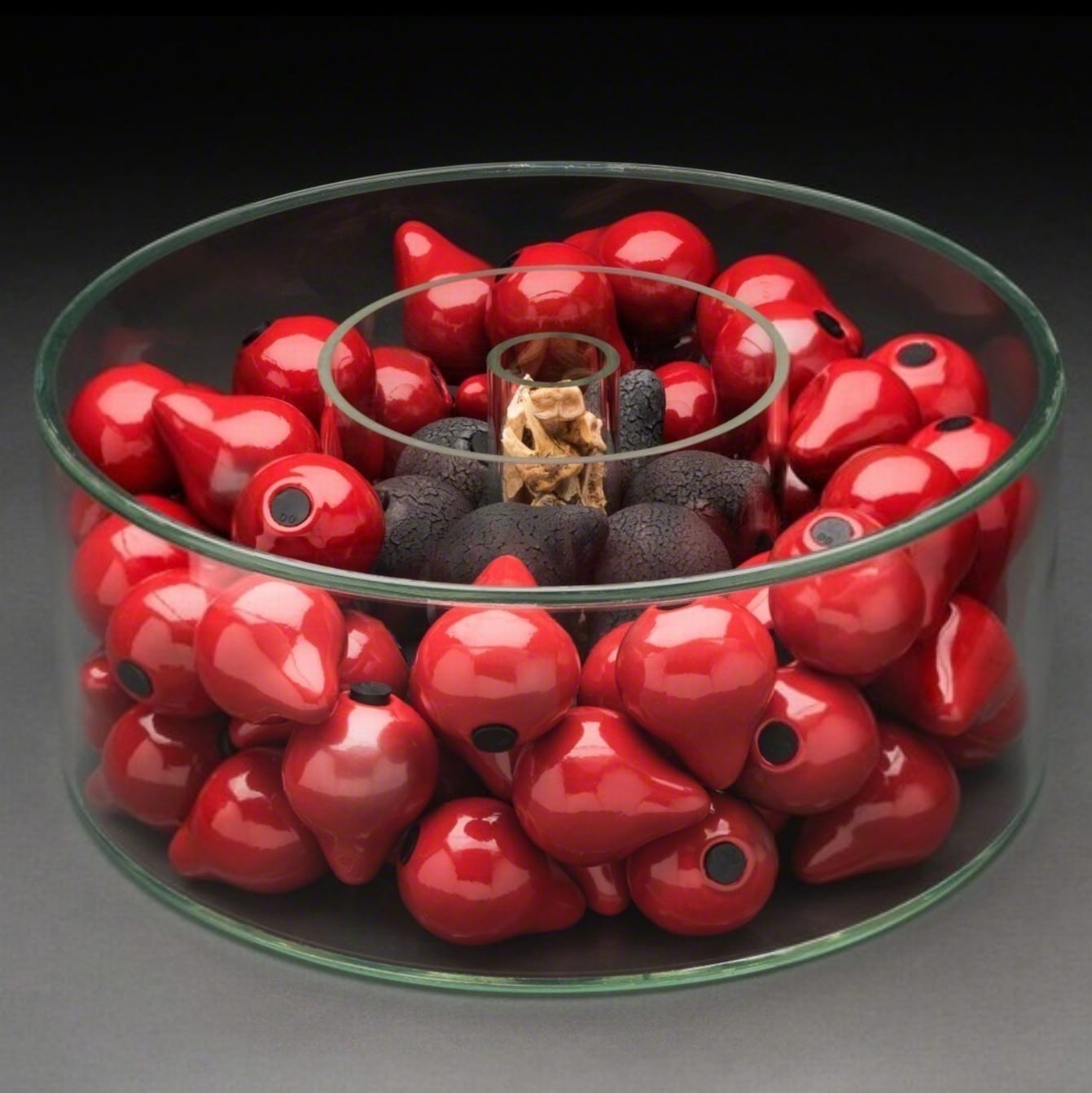
Anthony Stellaccio, Raw Material #5, 2018, Low-fire ceramic, glass, earth from the grave of the artist’s father, crushed horse’s jawbone, 6 1/2 × 16 1/2 × 16 1/2 in
Baltimore-based artist Anthony Stellaccio, like a ceramic cryptkeeper, is drawn to objects left behind. Found objects, momentos, forgotten belongings and the like are integrated into his works. Though solemn, the works seem to emerge reinvigorated with new meaning and purpose.
From Stellaccio’s artist statement:
I must, to begin, accept that my life will always be haunted by the specters of loss. And so the objects I create begin at sites of memory and of mourning – a cemetery, the home of a loved one, a childhood playground, or a historical site with emotional or spiritual resonance. I collect earth and objects from these spaces, sometimes leaving what I can in their place and sometimes incorporating the sacrifice of irreplaceable objects into my work. Theses rituals constitute my creative process, they are confrontational and cathartic, and the creation of beauty and art is mostly incidental.
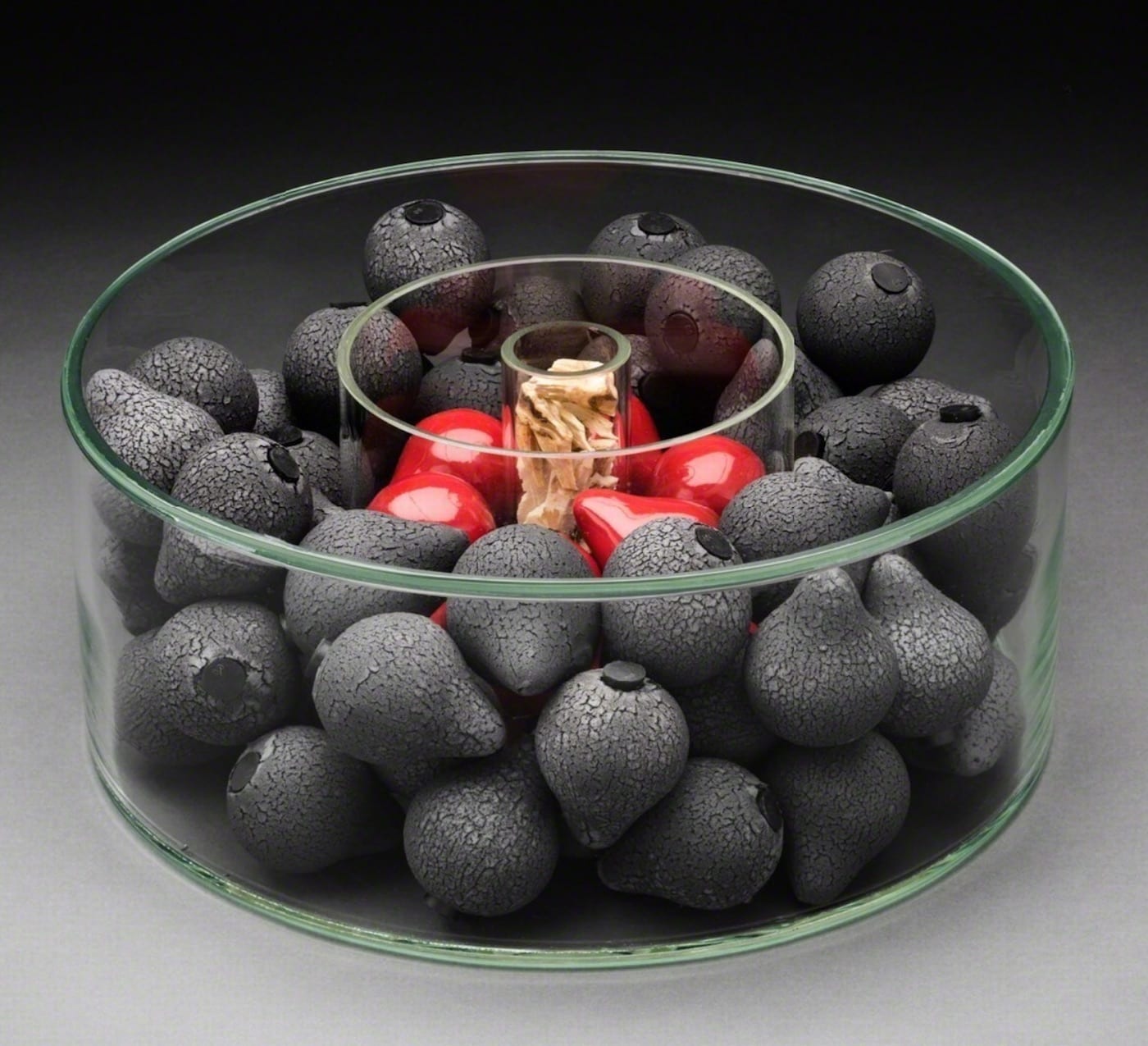
Anthony Stellaccio, Raw Material #6, 2018, Low-fire ceramic, glass, earth from the grave of the artist’s father, crushed horse’s jawbone, 6 1/2 × 16 1/2 × 16 1/2 in
In addition to being a ceramist, Stellaccio is also a phenomenal writer. Checked out his work for Cfile.
Elisabeth von Krogh in Converging Bodies
We Spotted late last year at Patrick Parrish, Converging Bodies (New York, October 25 – December 8, 2018), an exhibition of contemporary Norwegian Ceramics curated by Lars Sture and Patrick Parrish. The exhibition featured selected works by seven contemporary artists with unique and diverse approaches to ceramics including Andrea Scholze, Beth Wyller, Heidi Bjørgan, Lillian Tørlen, Lissette Escobar and Sofie Nørsteng. We’re particularly taken with the funky sculptural vessels of Elisabeth von Krogh.
Anthropomorphic qualities are inherent in the vessel with forms often described by the anatomy of the human body: foot, stomach, shoulders, and so on. In Elisabeth von Krogh’s (b. 1947) vessels, these bodily attributes are applied to size and form, creating unexpected shapes rather than focusing on the functional aspect of the object.
Read more here. Photos by Clemens Kois for Patrick Parrish Gallery.
Elliot Kayser
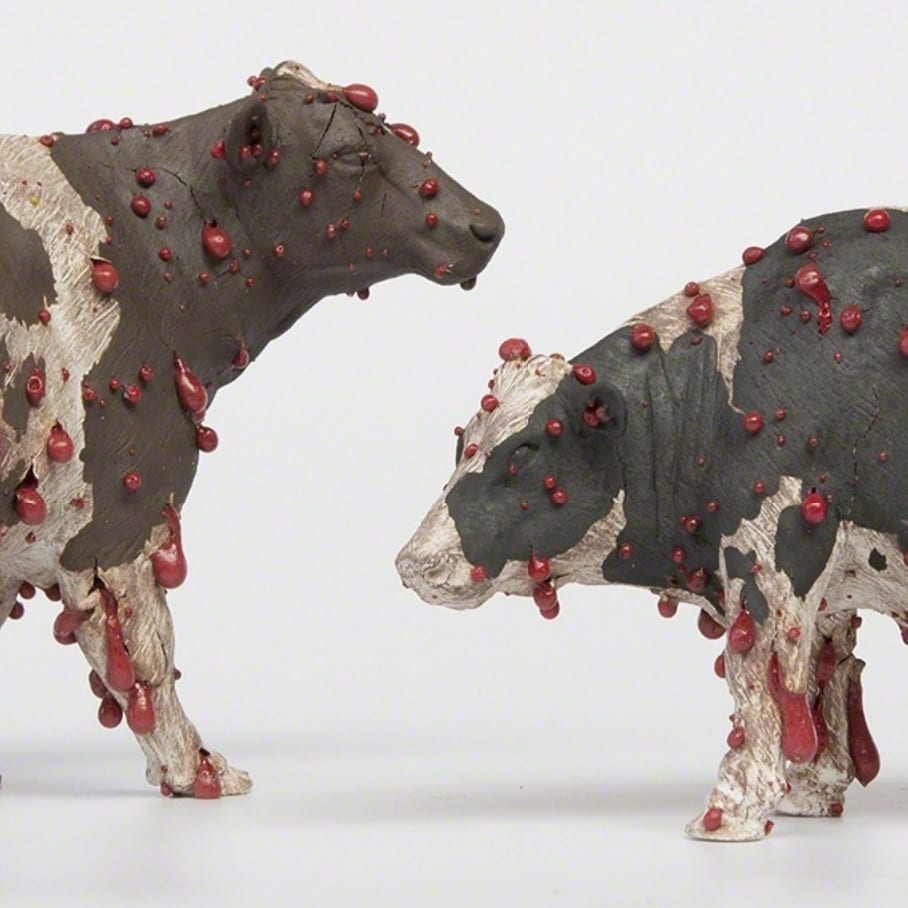
Elliot Kayser, Herd Immunity Ceramics, Image courtesy of the artist, Elliot Kayser, and of the Gallery, Ferrin Contemporary
After moving to Ann Arbor, artist Elliot Kayser simultaneously worked at a ceramic tile company and volunteered on small family farms. It’s there that his works began to draw and take form from his experience in the fields, taking care of both the animals and the people within the agricultural community.
From Kayser’s artist statement:
I am often asked: Why cows? The cow is the symbol for America’s landscape; our resources, history and our cultural beliefs. During the years while out of school I began to work on farms taking care of livestock; I wanted to know firsthand what kind of effort was needed to grow and raise the food I eat. The farmers I met during this exploration are incredibly community minded, trading resources and labor with one another, and taking the utmost care to be good stewards of the land. It is this sense of connection, or rather disconnect from it that has become the focus of my art. In the United States people have favored urban migration over the agrarian lifestyle, in doing so we have forfeited responsibility to care for our resources, handing that “burden” over to factory farming. The disappearing family farm model not only provides an income, but it is a homestead, and the health of that environment is just as important to the rancher or farmer as it is to the livestock living there. Cattle are one of America’s greatest industries in history, from the birth of Chicago via the stock yards and railroad, to the great beef bonanza, to the Cattleman’s Association which was integral to the success of the California gold rush. Cows have symbolized the prosperity and domestication of our land. Nowadays images of the American pasture have been abstracted, repurposed for product consumption. We are sold a belief that by proxy we still have agency to make a difference in how our food is handled, just by spending a few bucks more you can feel good knowing your beef was grass fed. It has become so easy to be complicit, to claim ignorance over our impact and depletion of resources. Through my art I am looking to reestablish the connection between value and stewardship, so that we can as a country sustain economic and community health.
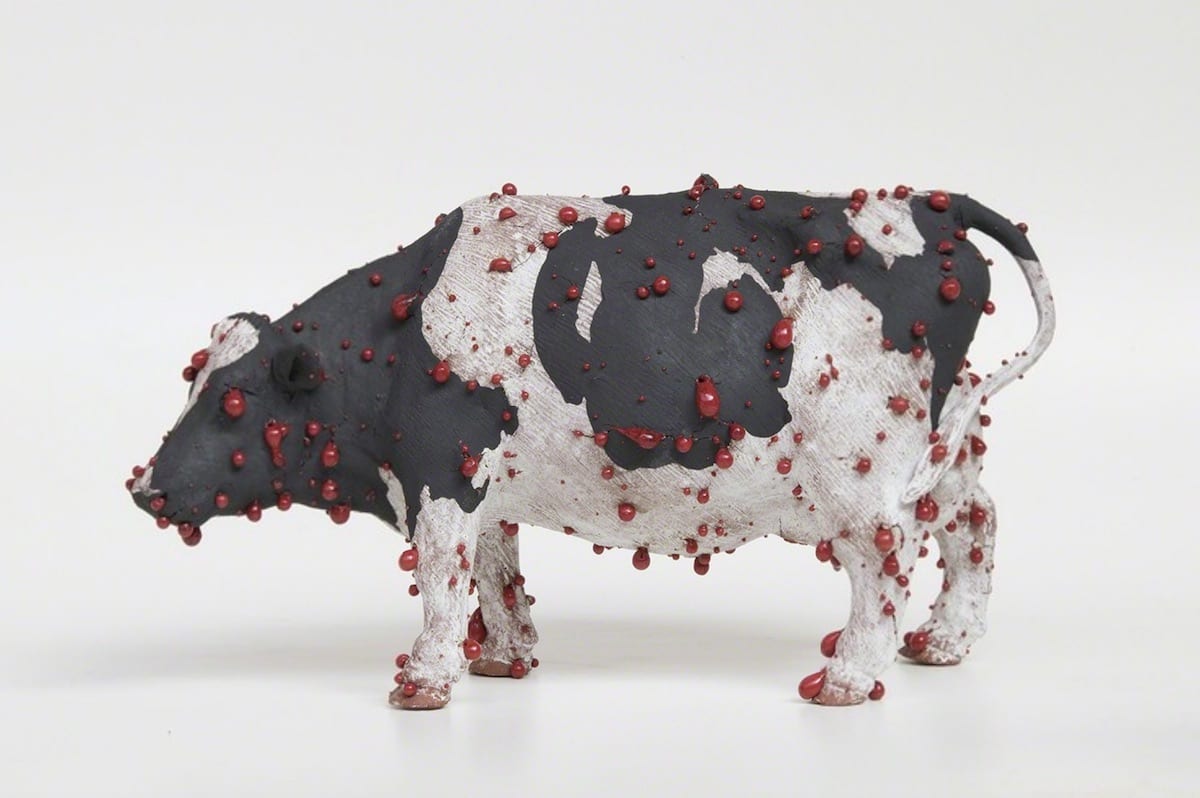
Elliot Kayser, Holstein Red (2) Ceramics, Image courtesy of the artist, Elliot Kayser, and of the Gallery, Ferrin Contemporary
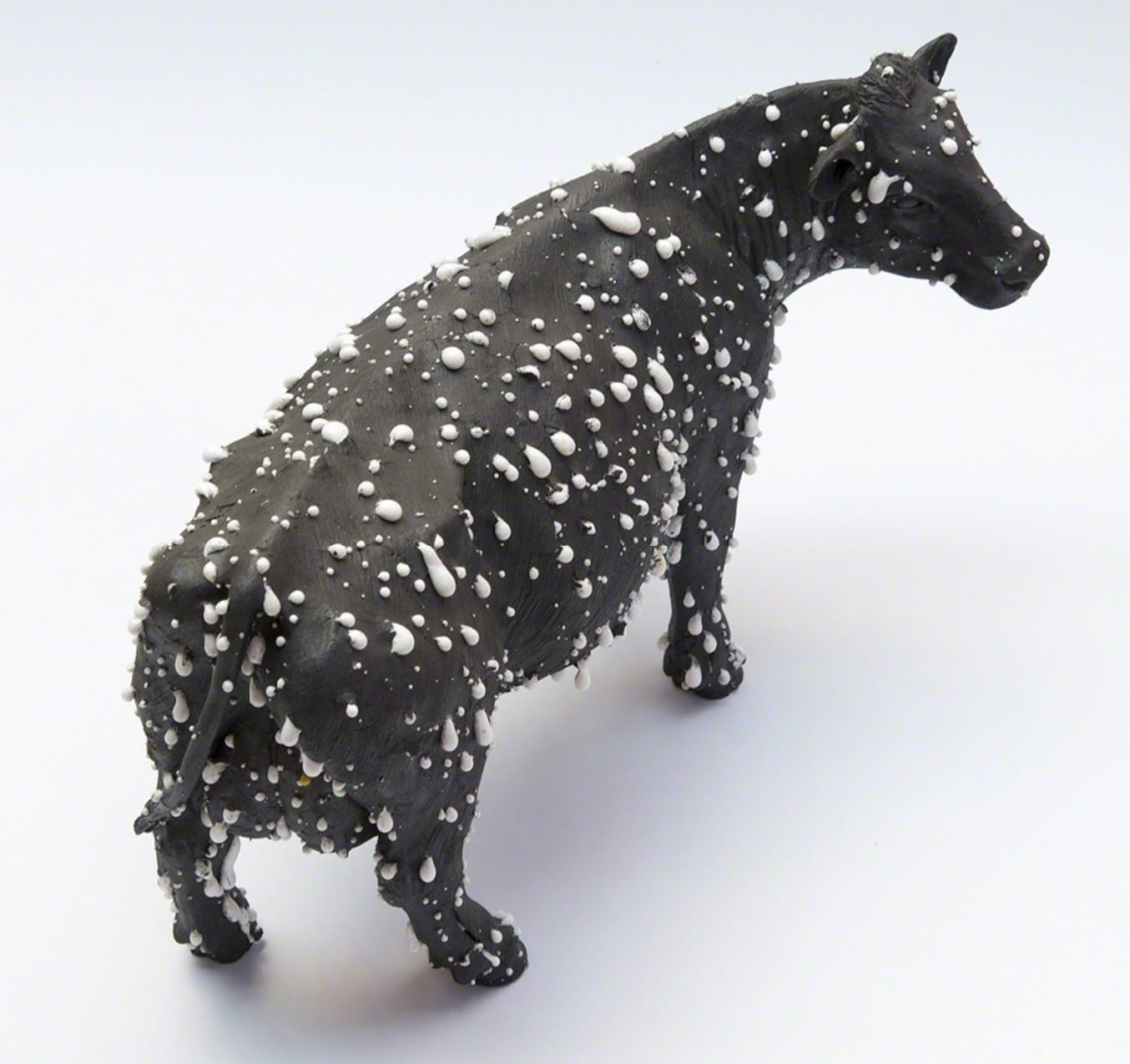
Elliot Kayser, Black Milk (1), 2018, Ceramics, 10 × 20 × 8 in. Image courtesy of the artist, Elliot Kayser, and of the Gallery, Ferrin Contemporary
Erika Emeren
Design Academy Eindhoven graduate Erika Emeren has turned a traditional Swedish cake-making technique into a method for forming unique ceramic vases. The artist uses a technique called Spettakaka, or spit-cake, to make the vases in her Ornament Now: Cake Vases range, as Dezeen writes.
Emeren’s Ornament Now: Cake Vases are created by applying slip clay to a rotating cylinder of papier-mâché using a piping bag, similar to those used in pastry making and cake decorating.
Each vase is then fired and glazed to create a glossy, brightly coloured finish. The process means that every vessel has a unique shape.
Love or loathe these Spotted selections from the world of contemporary ceramic art and contemporary ceramics? Share your thoughts below.

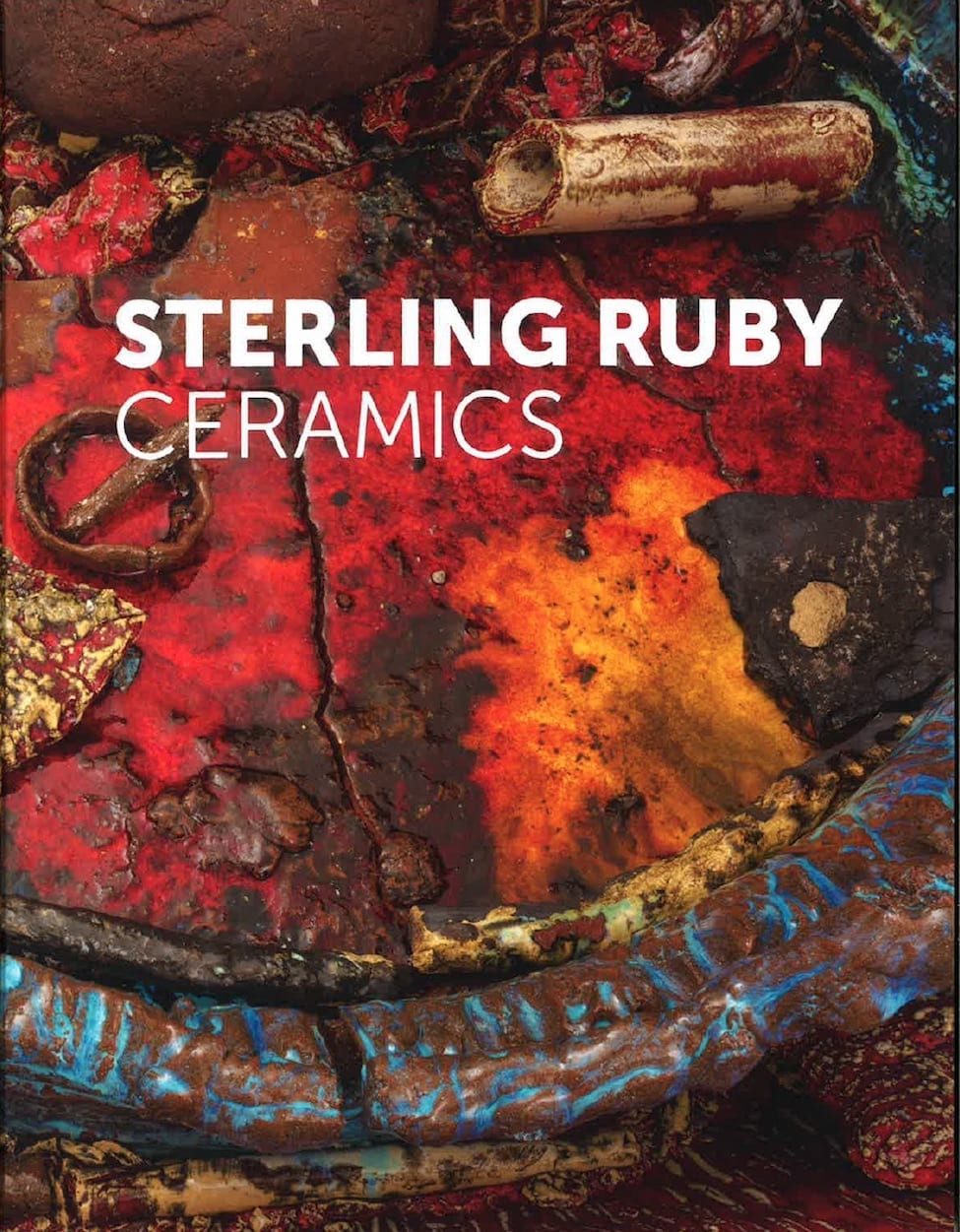
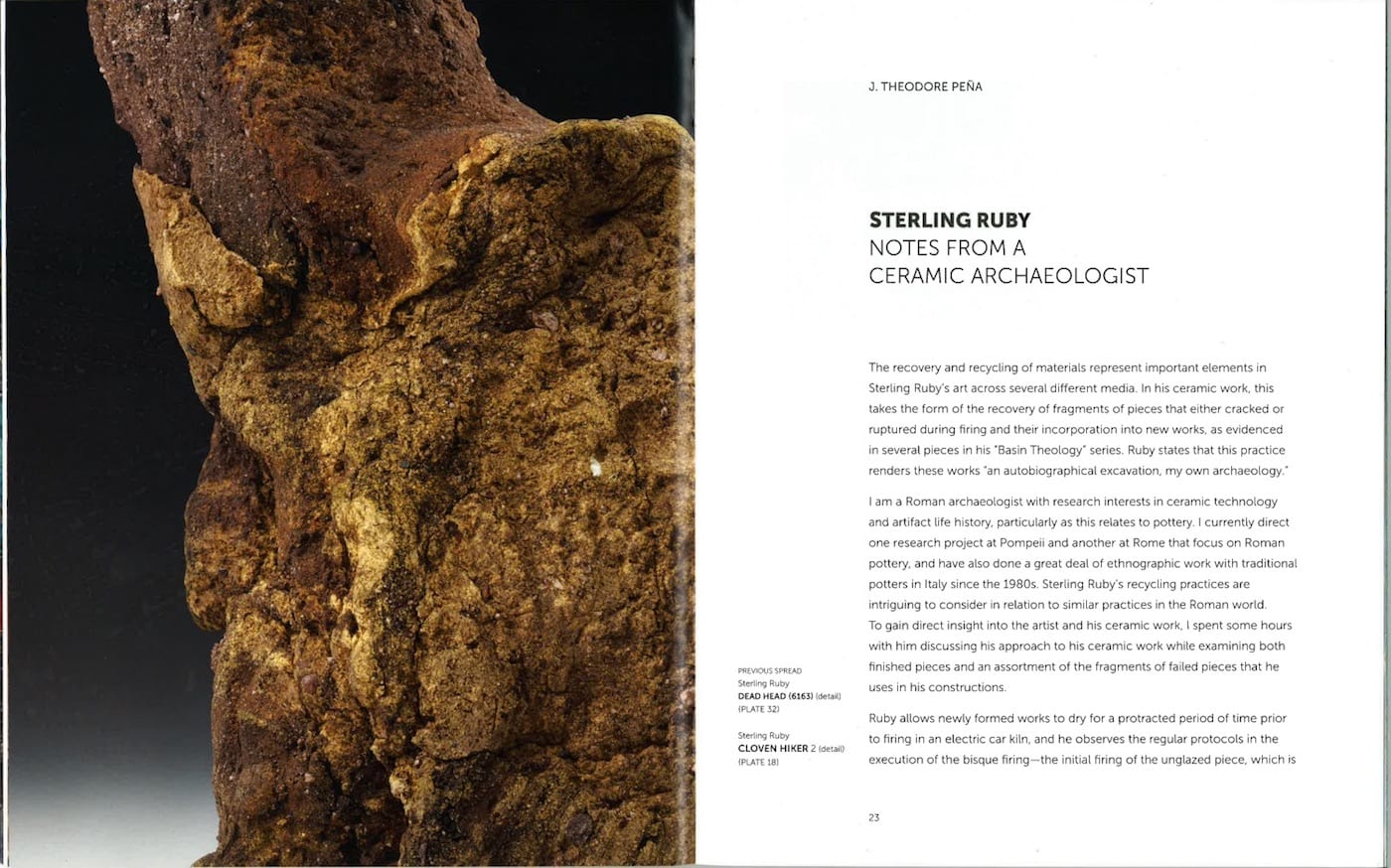
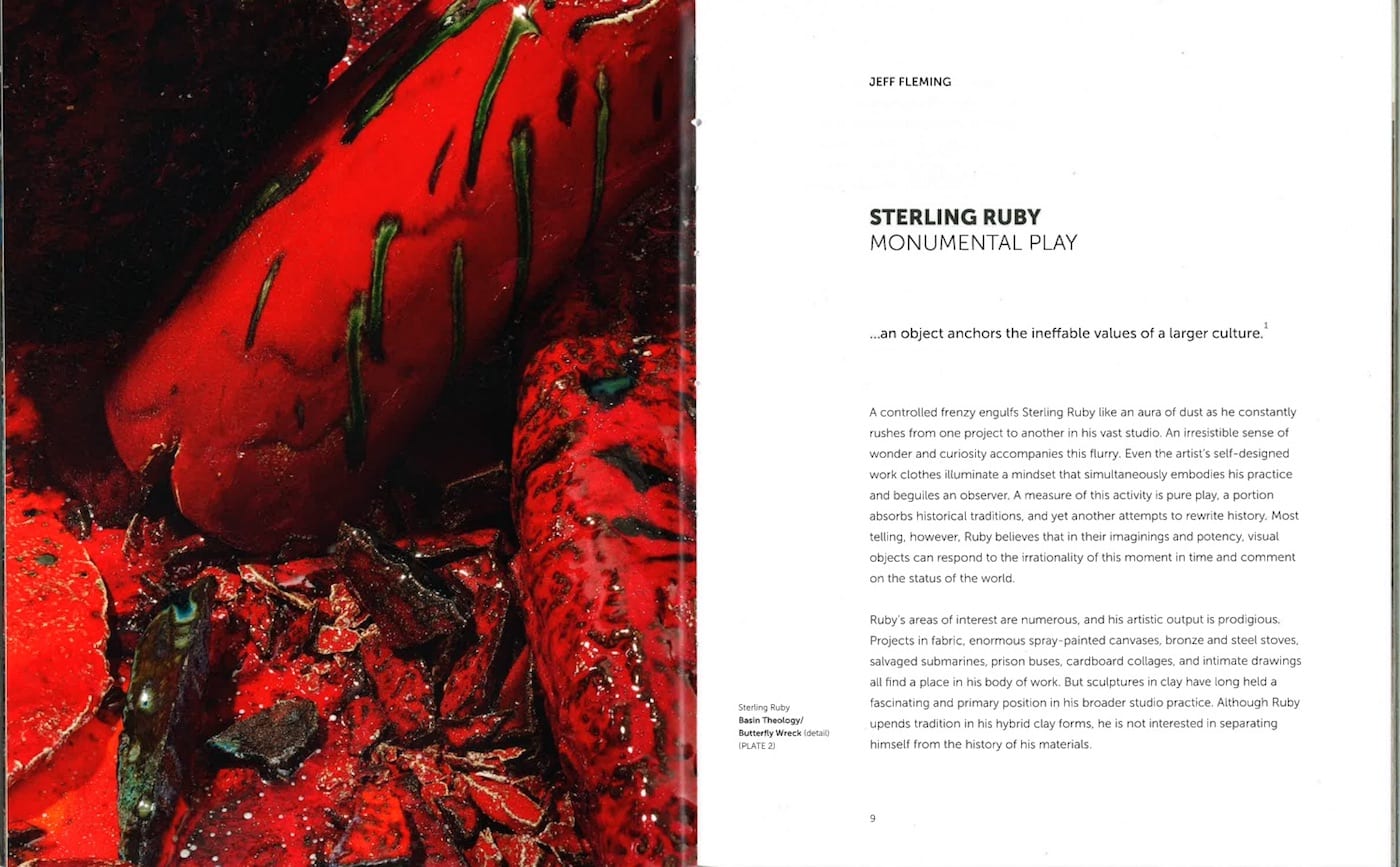
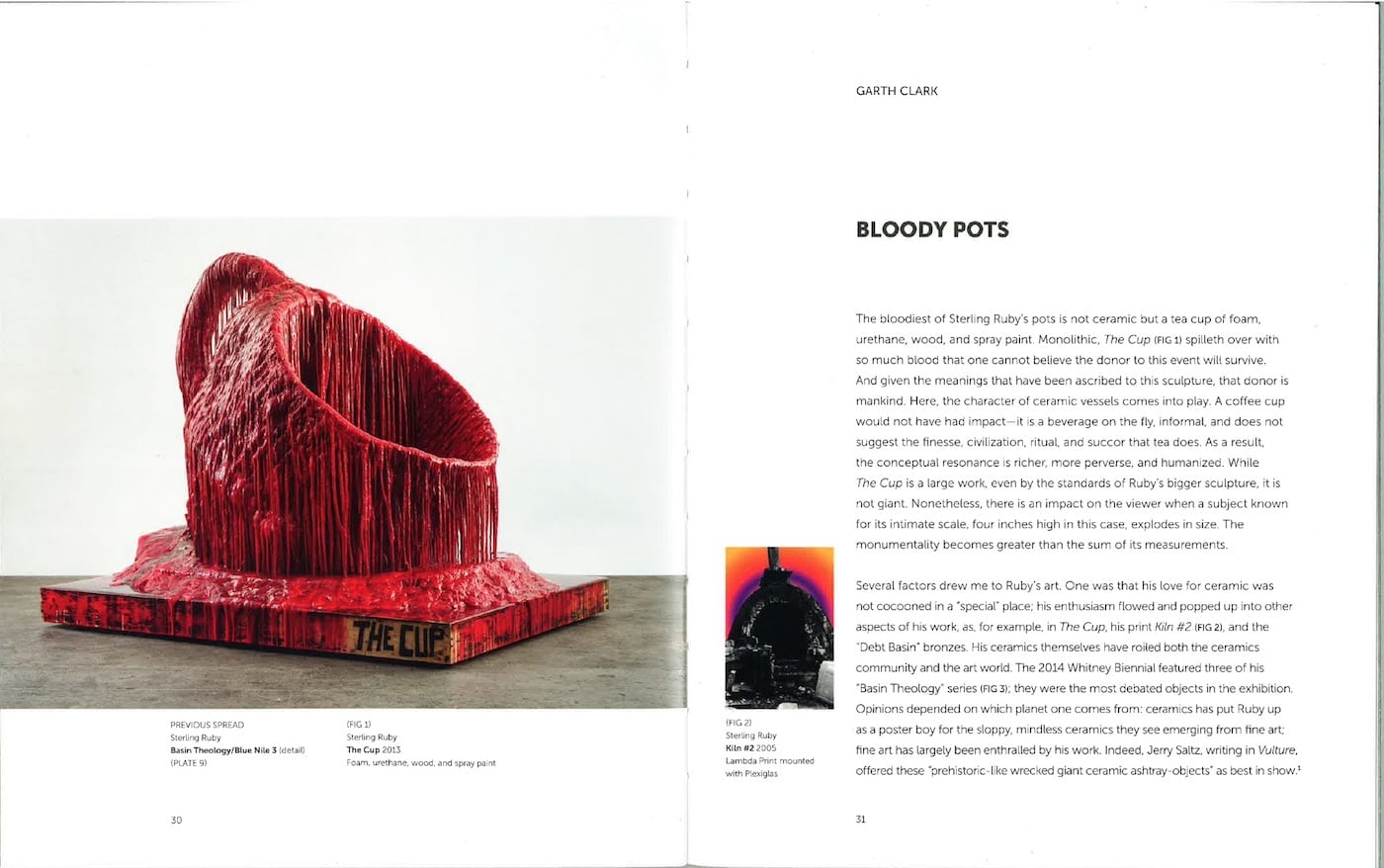
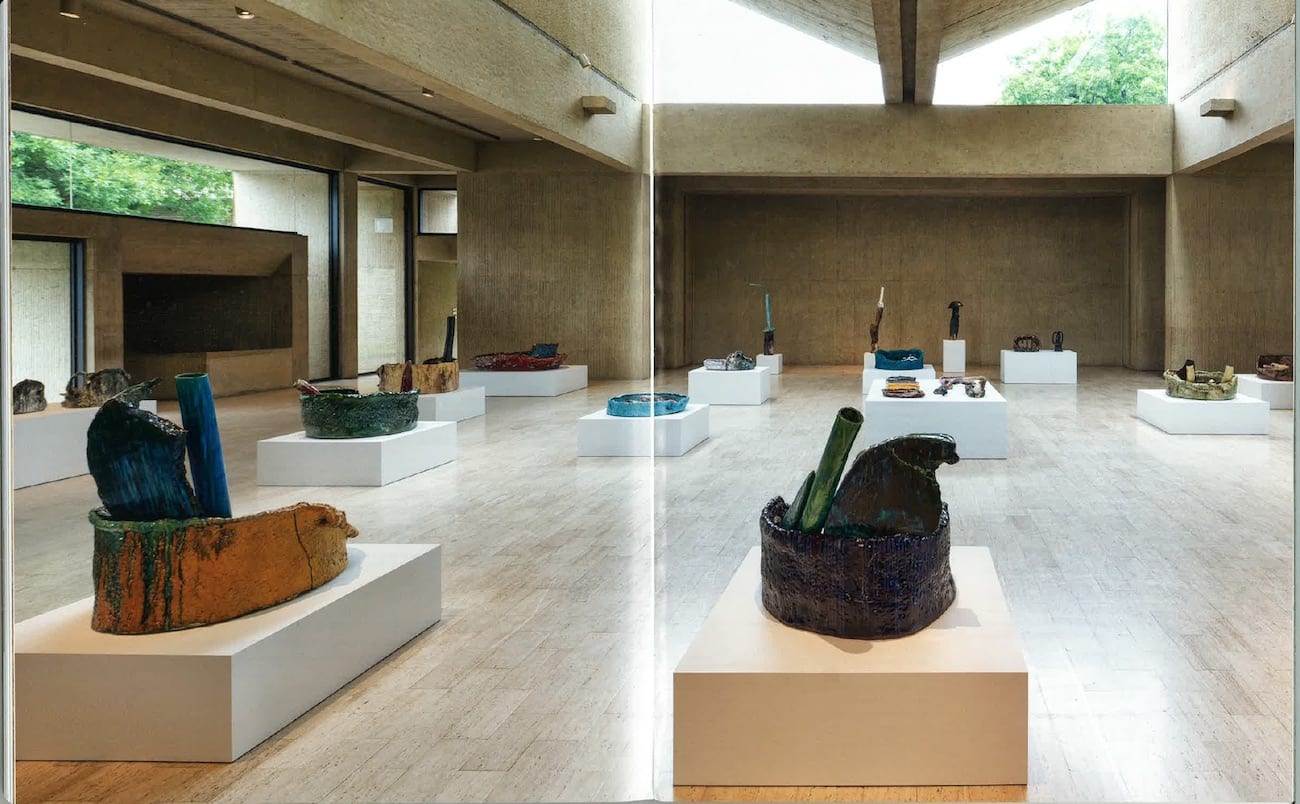
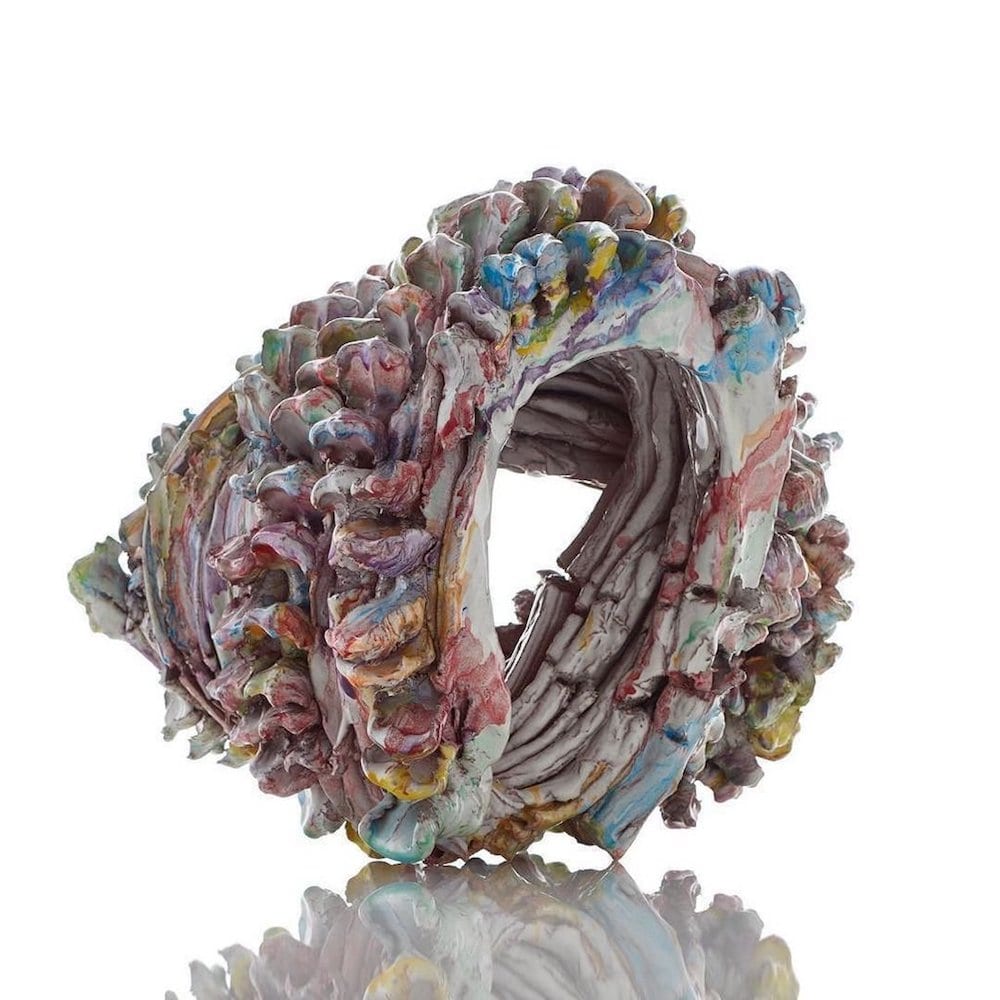
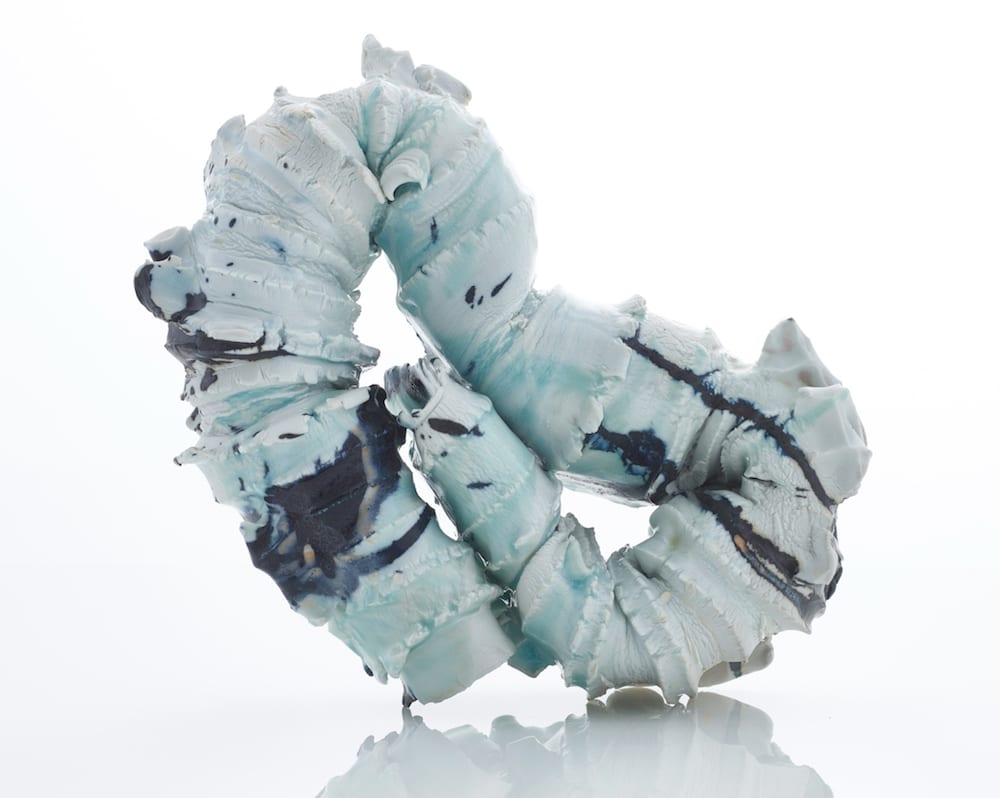
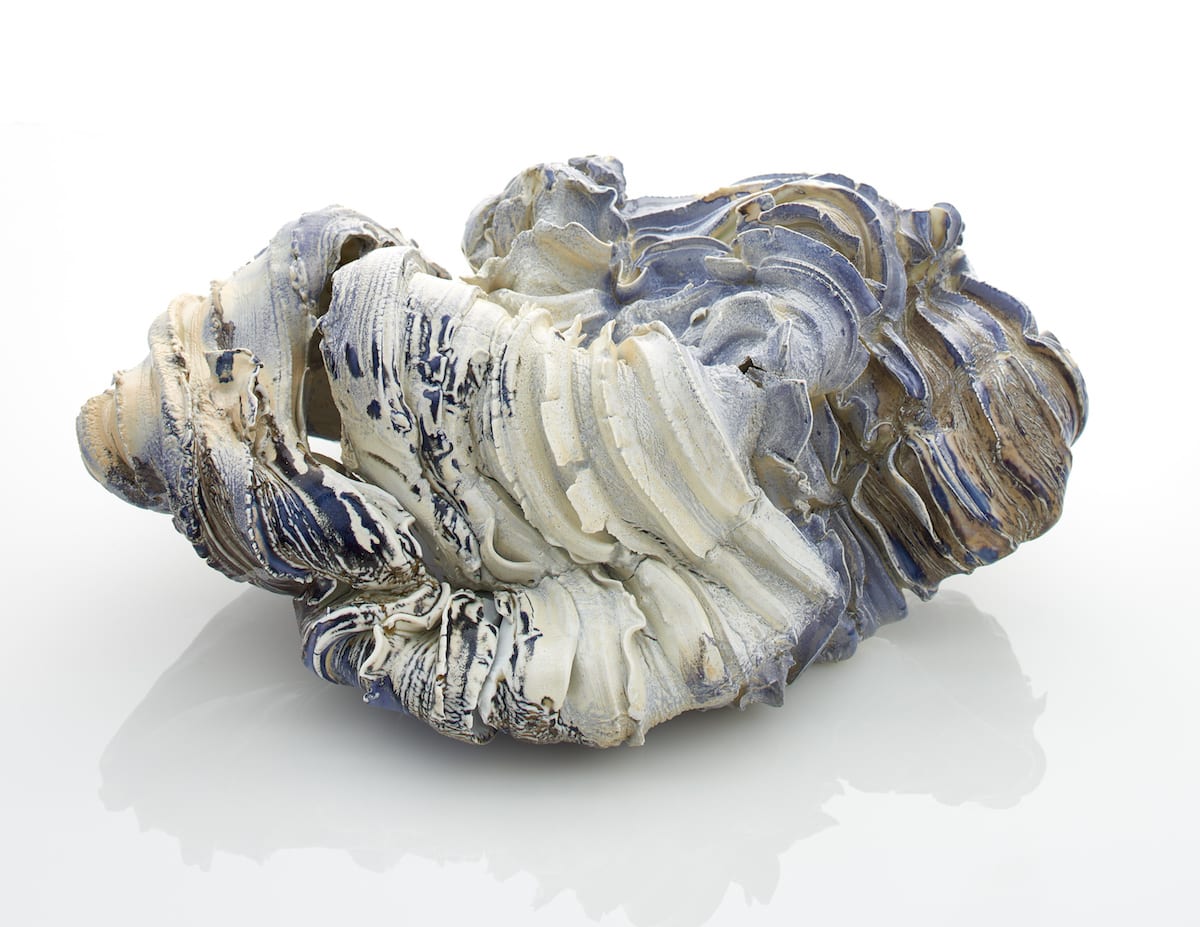


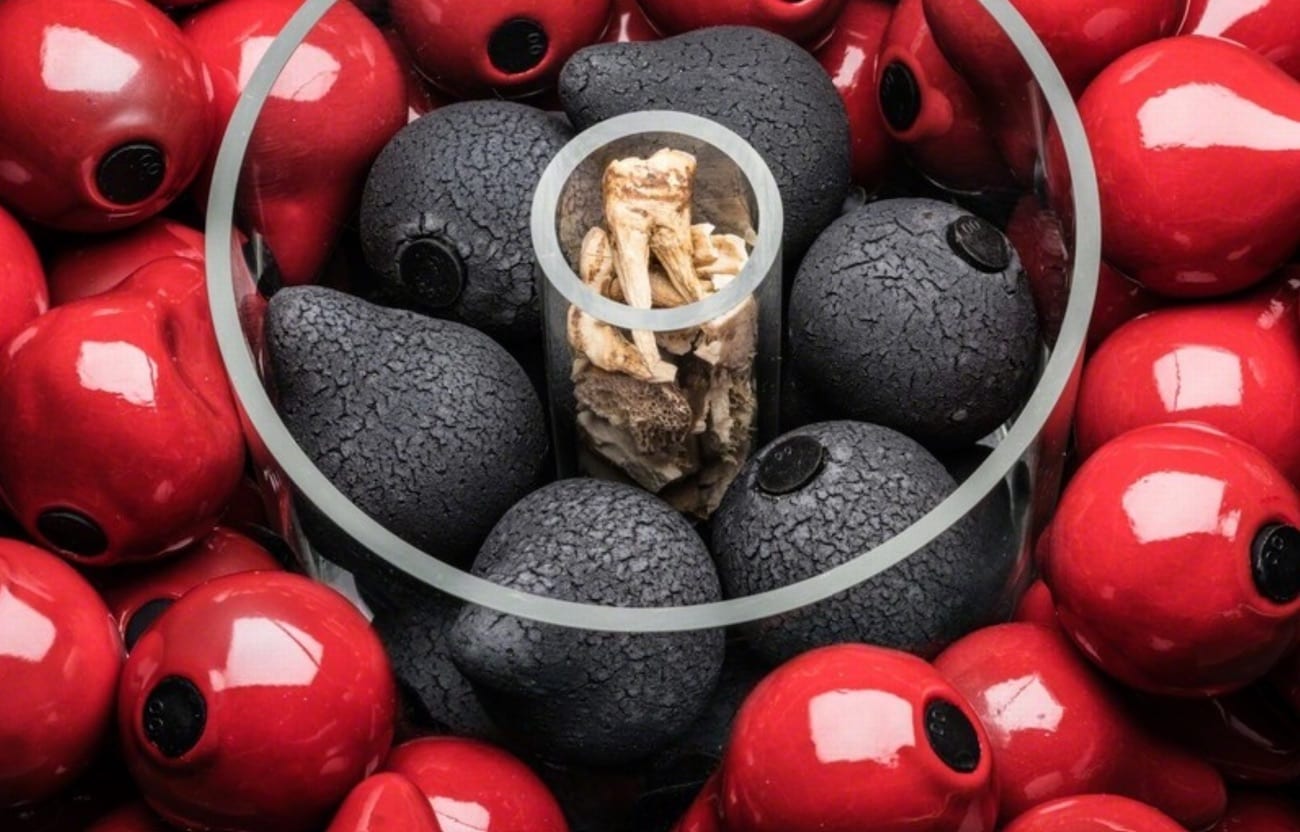
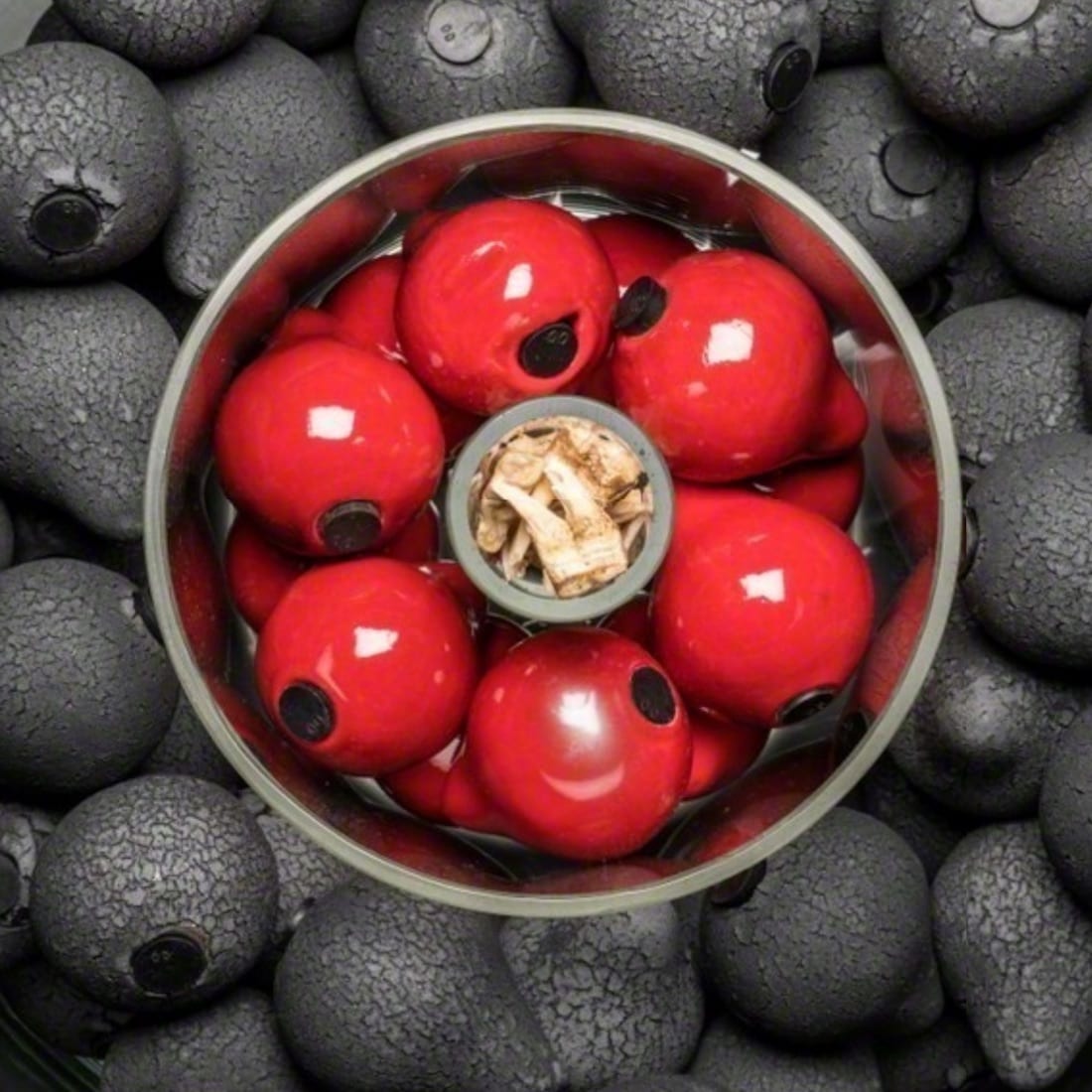
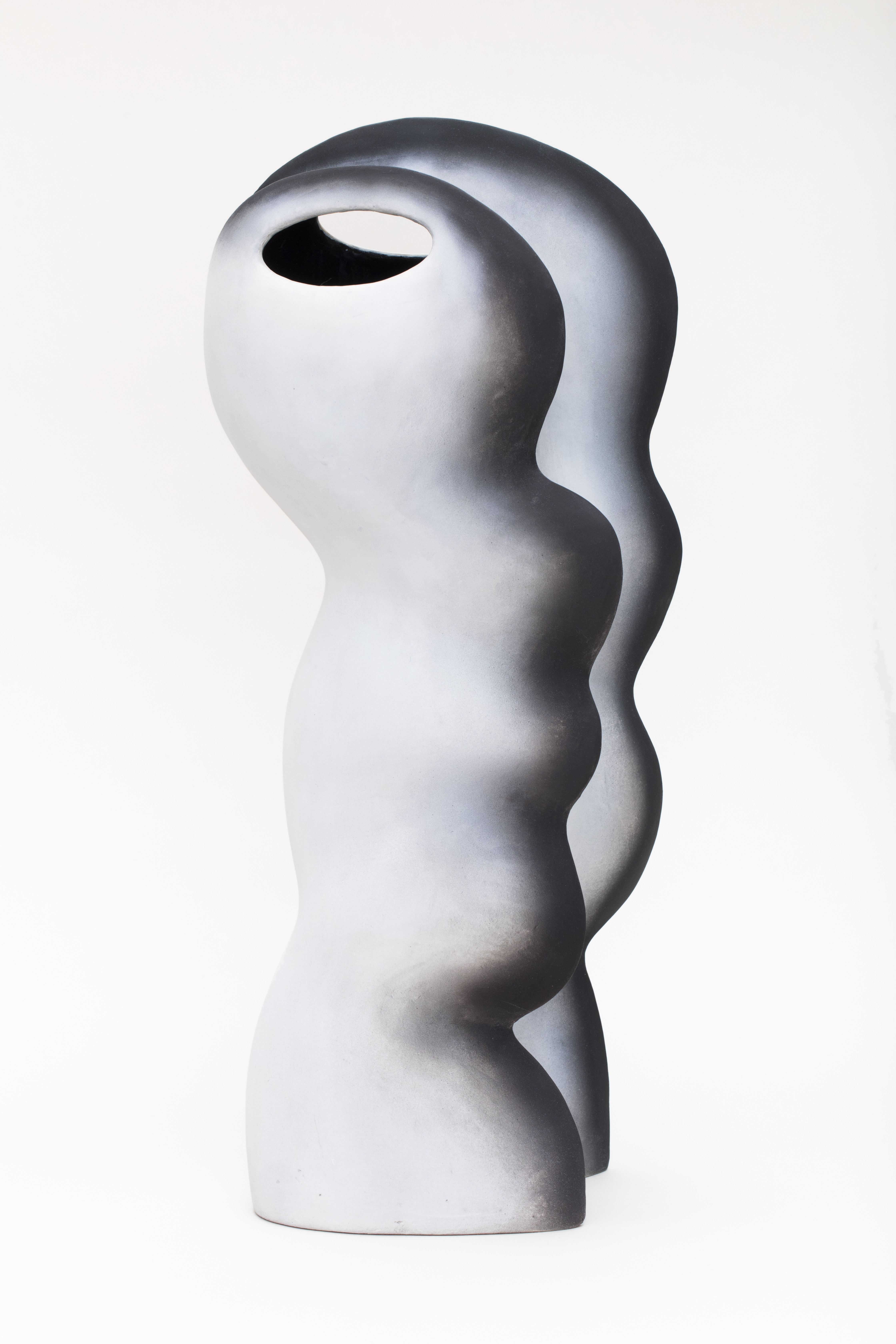
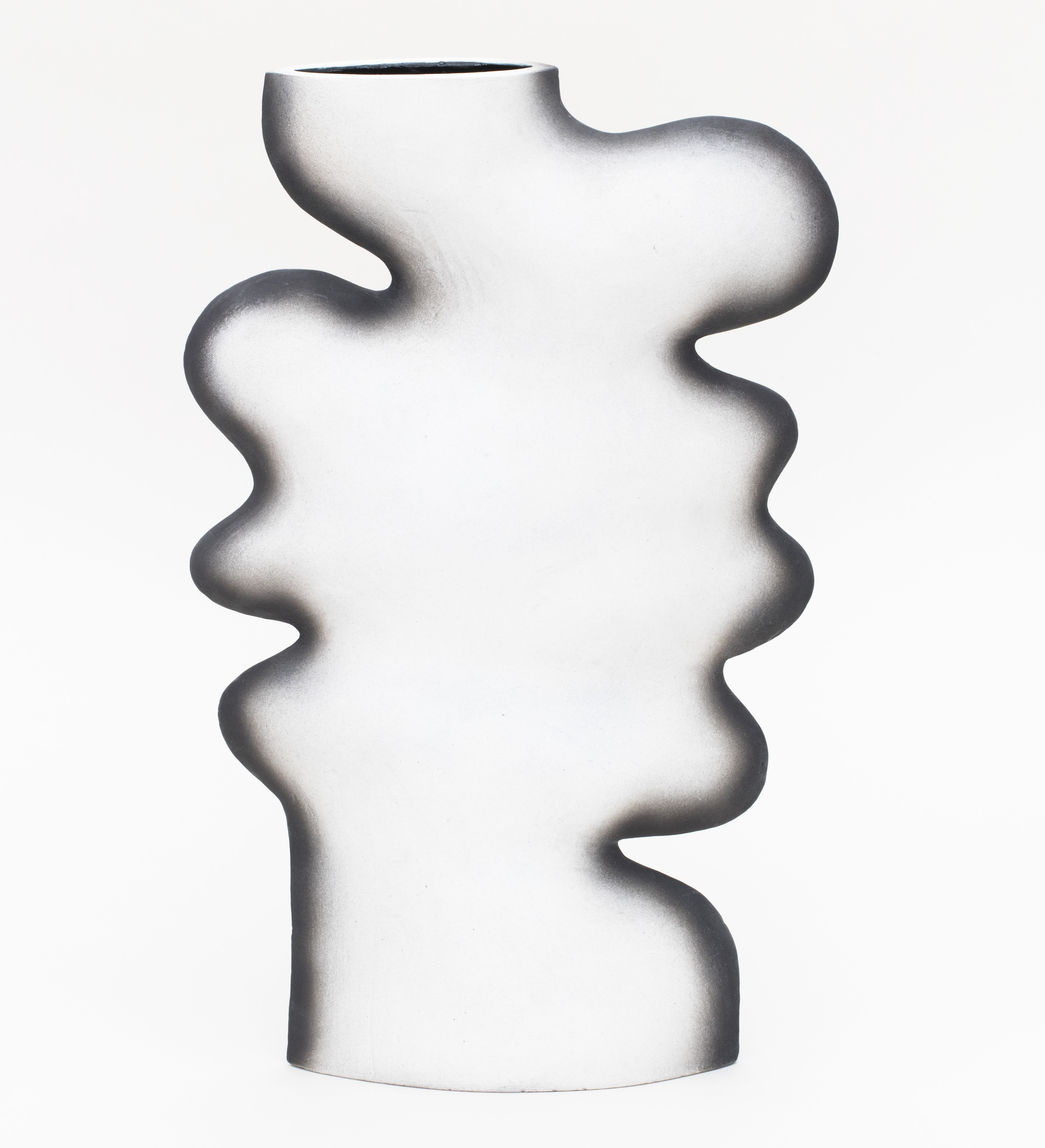
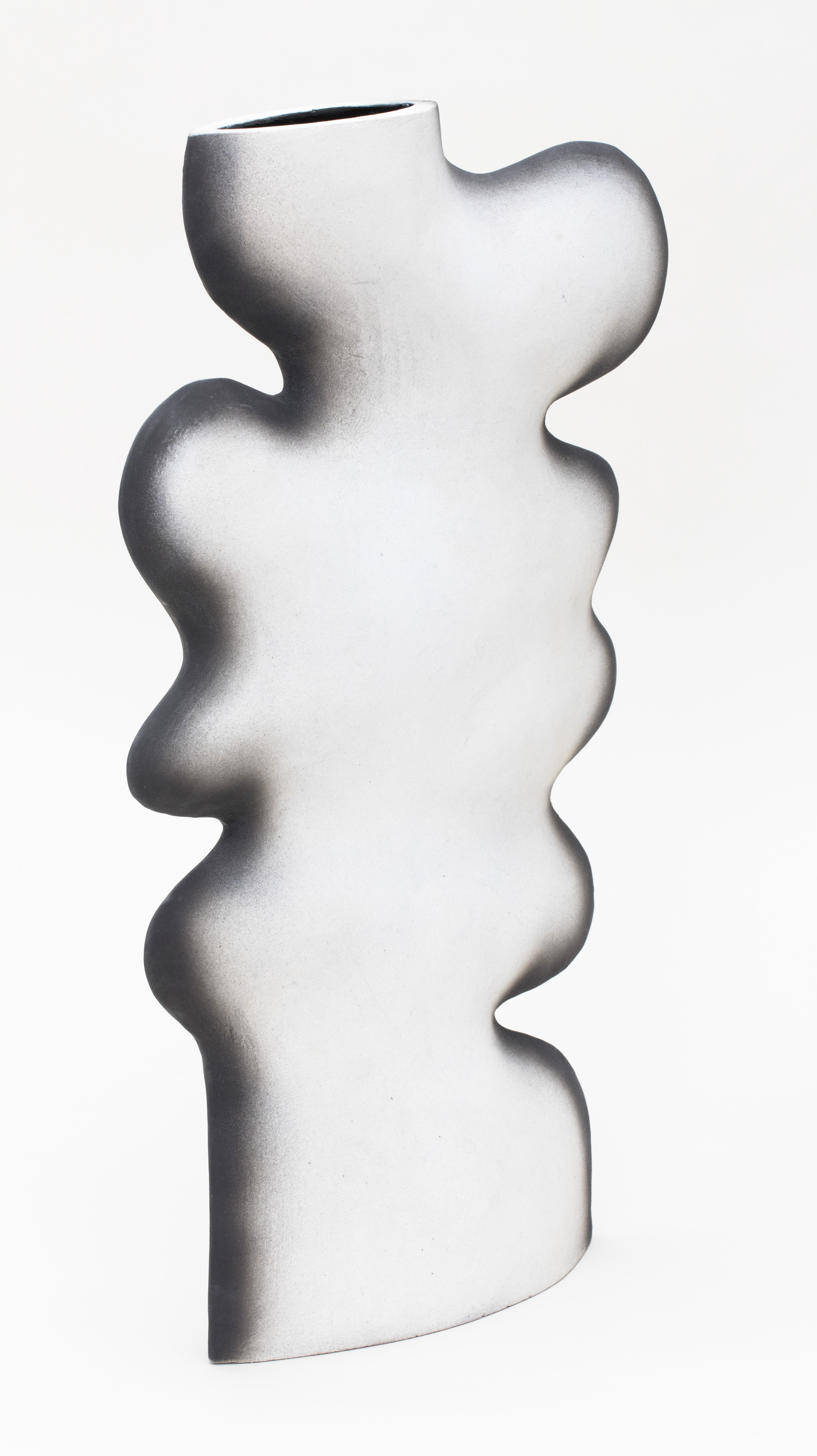
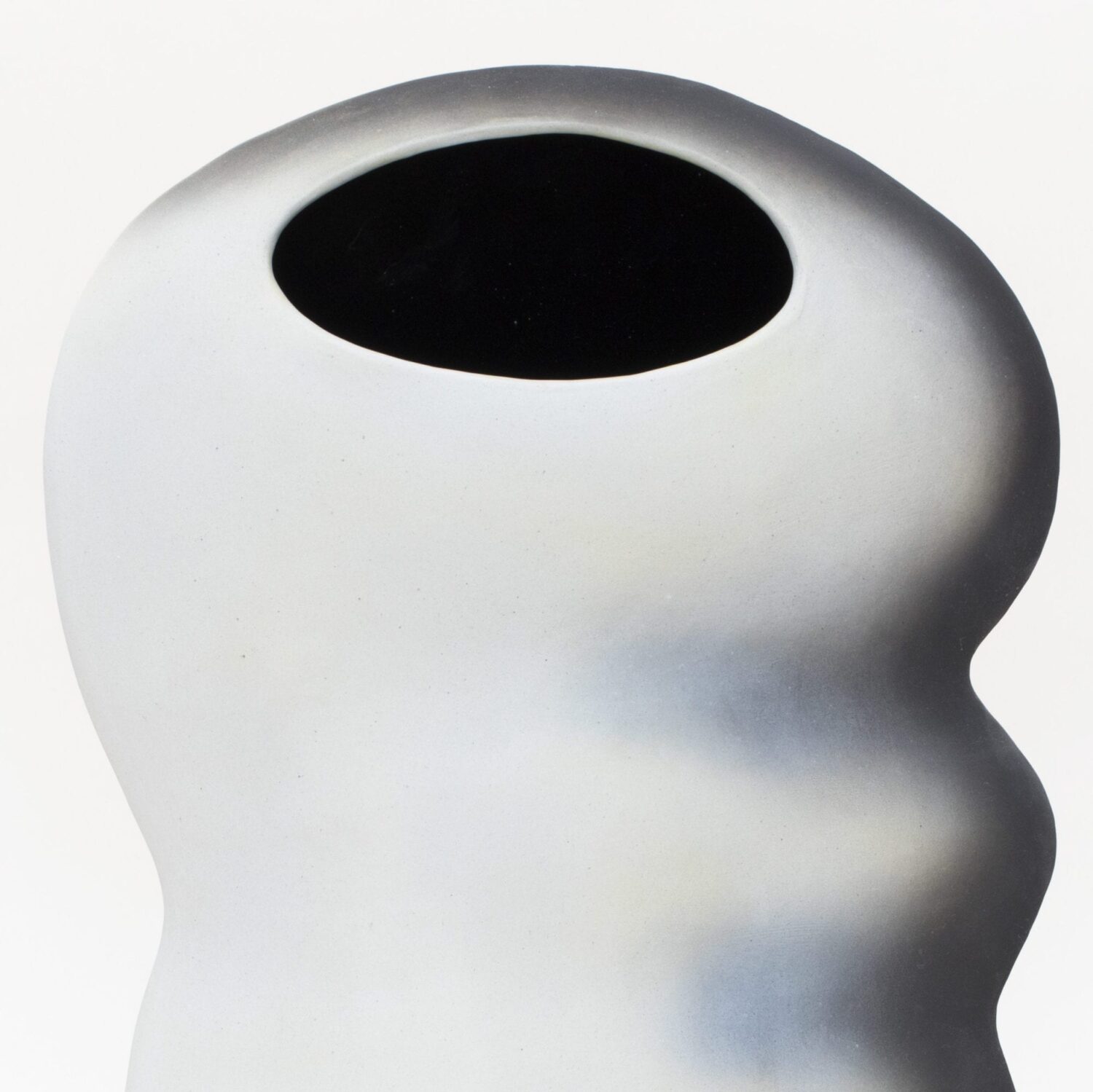
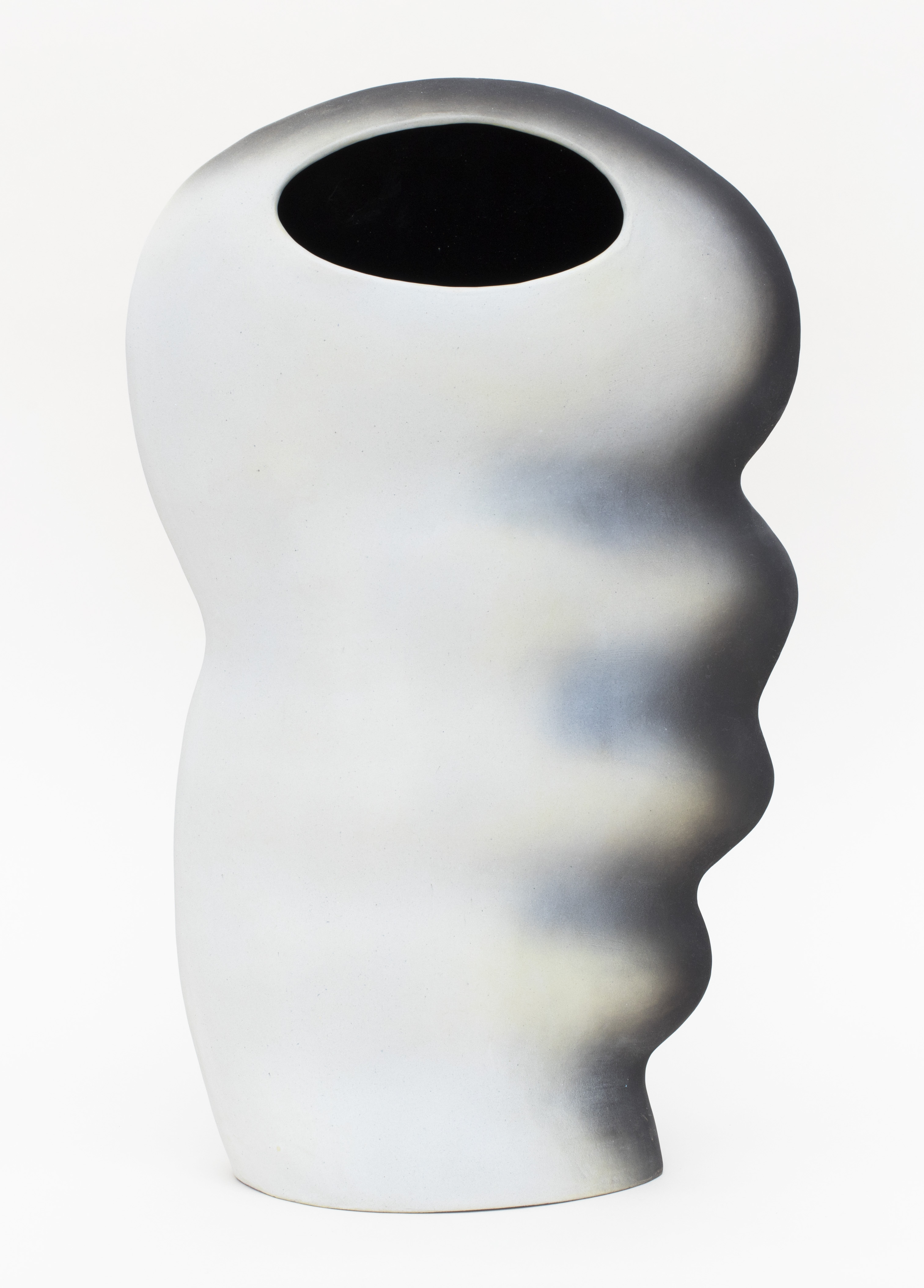

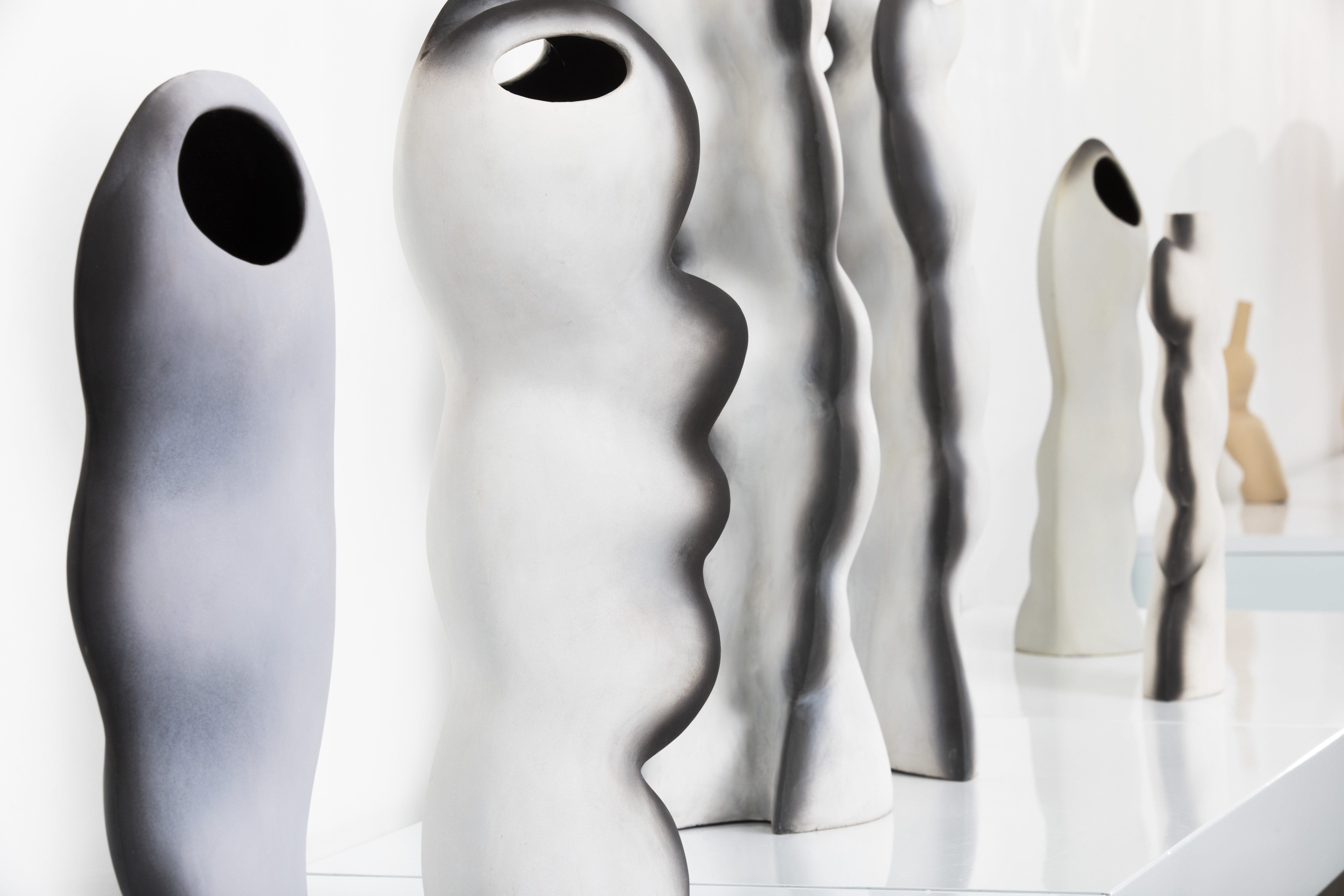

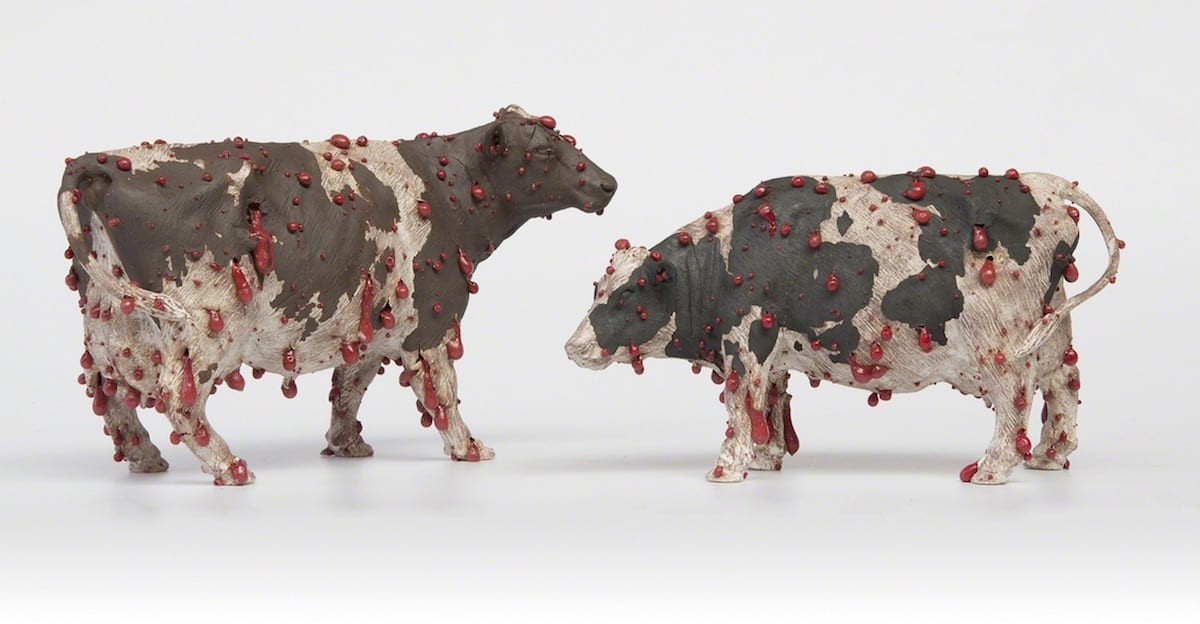
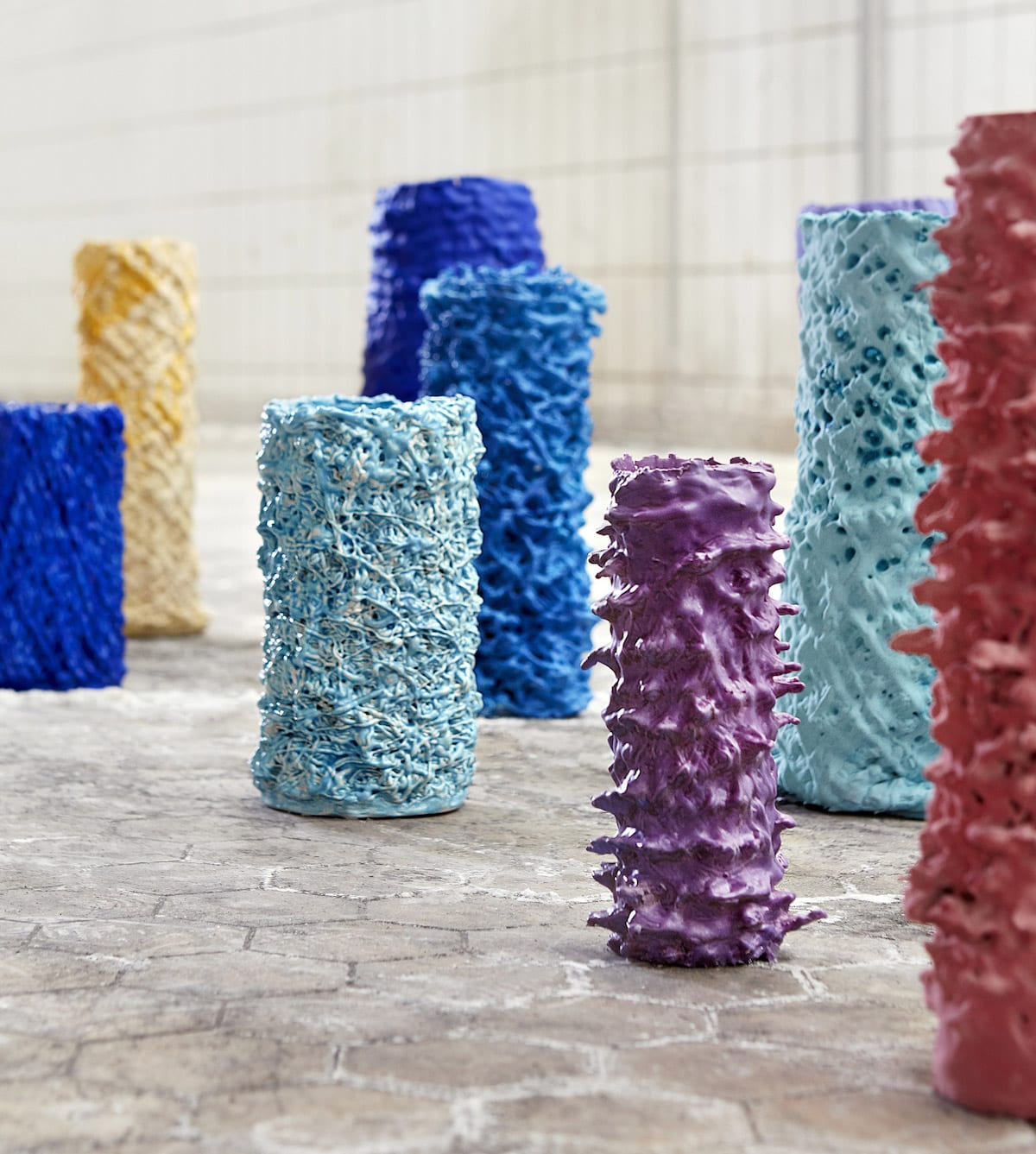
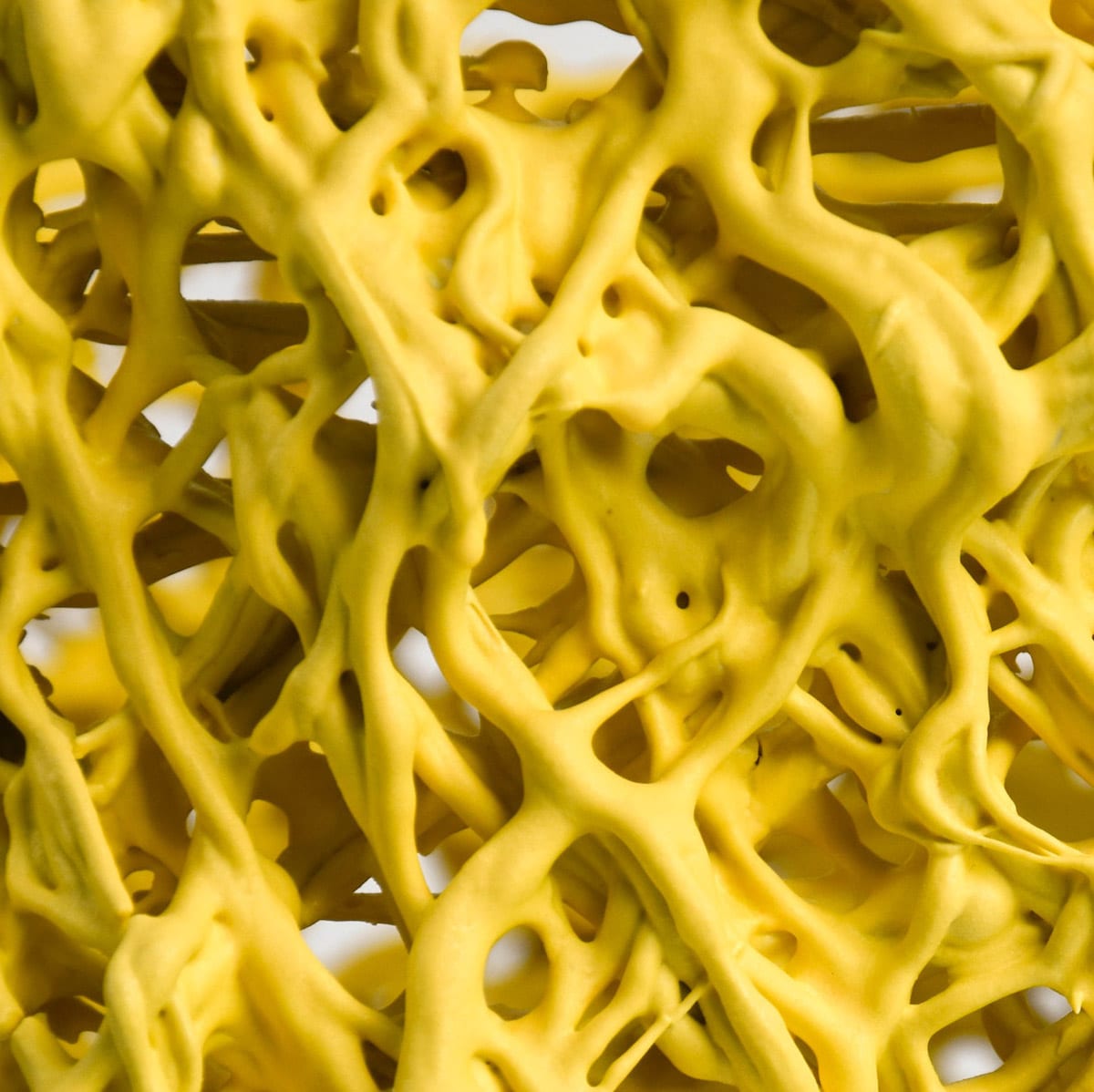
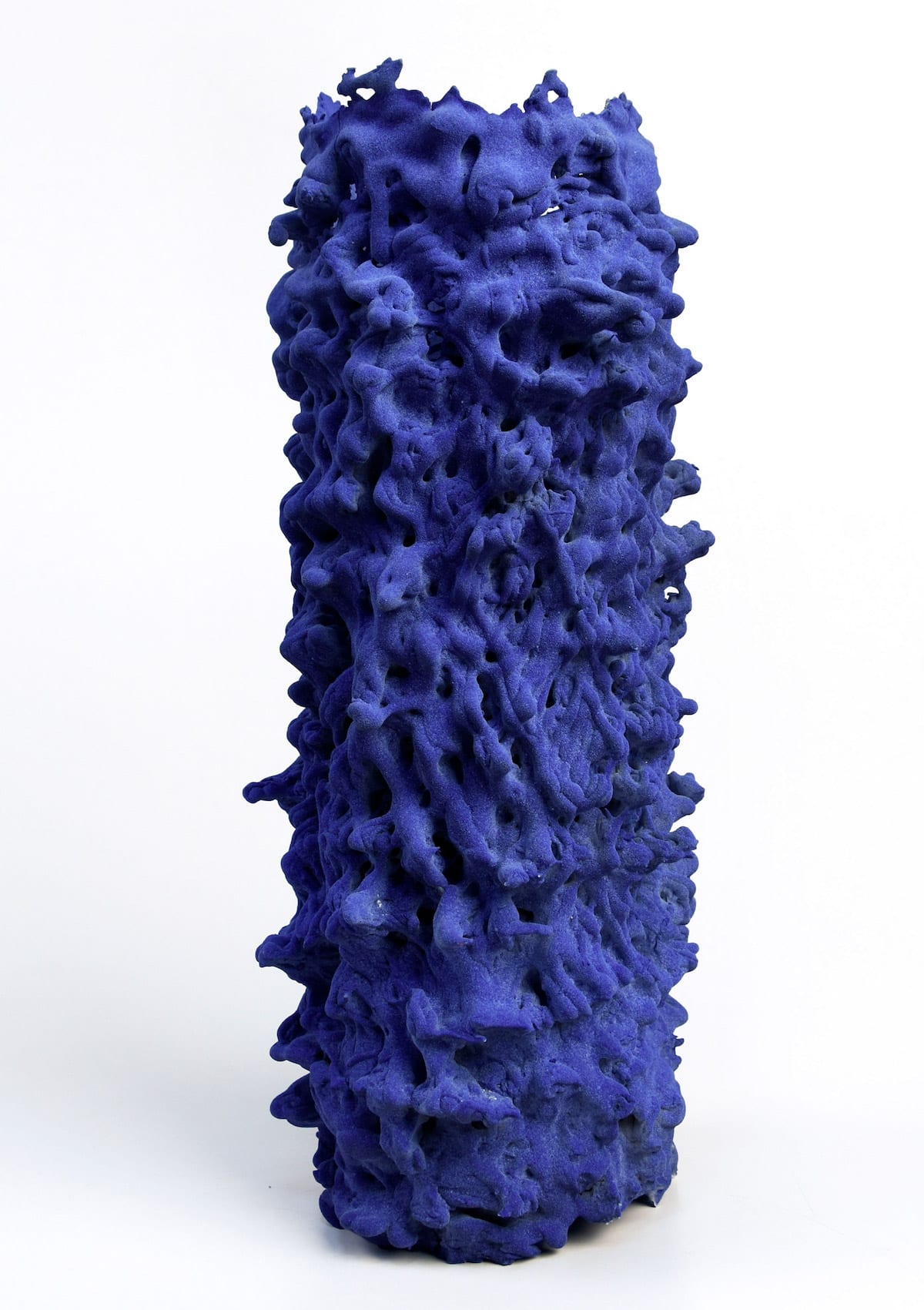

Add your valued opinion to this post.